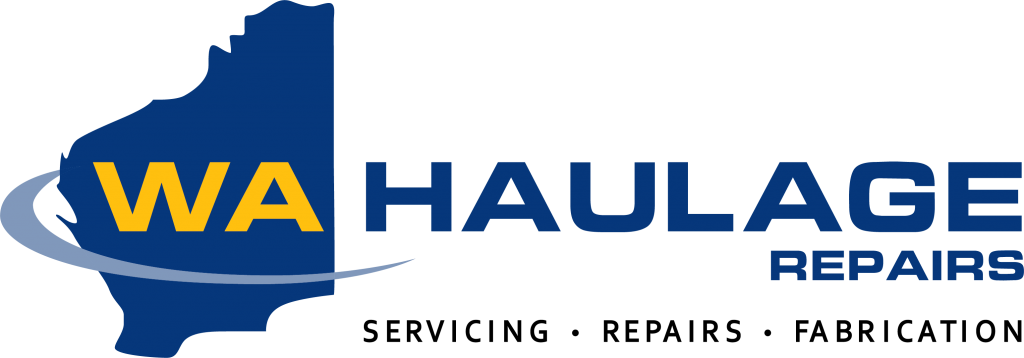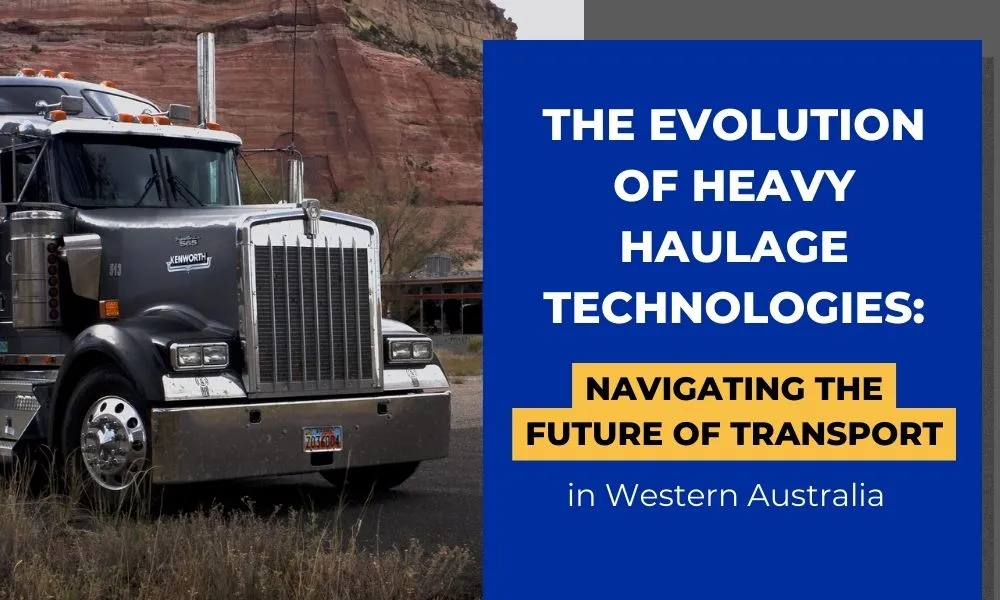The transportation sector in Western Australia is currently experiencing a remarkable phase of rapid evolution, fuelled by the region’s extensive industrial pursuits, notably within the mining and agricultural sectors. The immense geographical spread and the presence of operations in remote locales demand innovative solutions to navigate logistical hurdles effectively. This has positioned technology as a fundamental driver in the progressive transformation of heavy haulage operations, ensuring they are not only more efficient but also capable of meeting the unique demands of the Western Australian landscape.
Technological advancements are playing a crucial role in enhancing the efficiency, safety, and sustainability of heavy haulage operations. From advanced diagnostic tools to autonomous vehicles and sustainable practices, technology is not just supporting but leading the charge in transforming the heavy haulage industry in Western Australia.
Advanced Diagnostic Tools and Techniques
The arrival of sophisticated diagnostic technologies, such as telematics, IoT sensors, and advanced analytics, has revolutionised the maintenance and repair of heavy haulage vehicles. These tools enable real-time monitoring of vehicle performance, predicting potential failures before they occur.
With these advanced diagnostic tools, the precision in identifying and diagnosing vehicle issues has significantly improved. Technicians can now pinpoint problems with exactitude, reducing guesswork and enhancing the efficiency of repair processes, ultimately minimising downtime.
Real-World Examples of Advanced Diagnostic Tools and Techniques in Heavy Haulage Repairs:
A notable example includes a Western Australian heavy haulage company that implemented IoT sensors across its fleet. These sensors monitor engine performance, tyre pressure, and fuel efficiency, sending real-time data to a central system. This approach has led to a 30% reduction in unexpected breakdowns and a significant decrease in repair times.
Another entity in the heavy haulage industry, has integrated AI into its diagnostic processes since 2015. The company developed a sophisticated diagnostics system that ranks fault codes from engine downloads, predicting the likelihood of part failures. This AI-enhanced system learns from field repairs, refining its predictive capabilities with each repair logged by technicians. Such an approach not only streamlines the diagnostic process but also enhances the accuracy of fault identification and the efficiency of repairs.
The Rise of Autonomous Vehicles in Heavy Haulage
Autonomous technology promises to revolutionise heavy haulage with potential impacts including increased safety, efficiency, and reduced operational costs. Automated vehicles can operate in challenging environments with precision and without the constraints of human limitations.
The benefits of autonomous heavy haulage include round-the-clock operation, reduced human error, and lower labour costs. However, challenges such as high initial investment, regulatory hurdles, and safety concerns in mixed-traffic environments remain significant.
Case Studies of Companies Embracing Autonomous Solutions in Western Australia
Fortescue Metals Group (FMG):
Fortescue Metals Group has completed its Chichester Hub autonomous haulage project, which is one of the industry’s largest conversions to an autonomous haulage system (AHS). With a fleet of 183 trucks operating autonomously across its Solomon and Chichester Hubs, FMG has seen substantial benefits since the inception of this technology. Since 2013, the autonomous fleet has safely travelled over 52 million km and moved 1,500 million tonnes of material. This has not only improved safety outcomes but has also resulted in a 30% productivity increase for the company. The use of Cat MineStar Command for hauling technology allows these vehicles to be operated from Fortescue Hive, the company’s integrated operations centre in Perth, which is central to managing the autonomous fleet. This has allowed FMG to focus on further productivity and efficiency gains, thereby delivering increased value to shareholders.
Scania and Rio Tinto:
Scania and Rio Tinto have entered into a research and development collaboration to create more agile autonomous haul trucks at Rio Tinto’s Channar mine in the Pilbara region. This project is pursuing both environmental and productivity benefits, aligning with Rio Tinto’s climate action plan, which includes phasing out the purchase of new diesel haul trucks by 2030. They have launched trials on Scania’s 40-tonne-payload autonomous mining trucks and have quickly achieved driverless operation in a simulated load and haul cycle environment. This partnership opens up the potential for transitioning to electric-powered vehicles in the future, aiming to develop a sustainable autonomous mining solution.
Sustainable Practices in Heavy Haulage
Sustainability has become a cornerstone for businesses worldwide, with the heavy haulage industry being no exception. Implementing eco-friendly practices not only helps in reducing the environmental impact but also aligns with the growing regulatory and societal demands for greener operations.
Technologies such as electric heavy haulage vehicles, biofuels, and solar-powered auxiliary systems are leading the way in promoting sustainability. Practices like route optimization and driver training on fuel-efficient driving techniques also contribute significantly to reducing carbon footprints.
Success Stories of Businesses Implementing Green Initiatives in Western Australia
In Western Australia, two significant green initiatives stand out for their innovative approach to heavy haulage technologies:
The Sustainable Built Environment National Research Centre (SBEnrc) is at the forefront of a pioneering project that aims to establish a hydrogen-fueled heavy haulage industry in the region. This project is looking to develop a comprehensive industry supply chain for hydrogen-powered heavy haul vehicles, including production, transportation, and refueling infrastructure. A key element of this initiative is a pilot program involving a maintenance truck operated by Main Roads Western Australia (MRWA) and a concrete agitator operated by BGC. These vehicles, initially operating in the Midwest and Perth regions, will be serviced at a purpose-built hydrogen refueling station. This initiative is not only expected to pave the way for the adoption of hydrogen as a fuel for heavy transport in Western Australia but also across the nation, contributing to economic viability, market activation, and technology maturity.
Another ambitious green project is the development of one of Australia’s largest proposed green hydrogen hubs, which is a collaborative effort between Western Green Energy Hub and Korea Electric Power Corporation. Located in Western Australia’s Goldfields-Esperance region, the project spans 15,000 square kilometres and is expected to involve the installation of around 3,000 wind turbines and 25 million solar panel modules. These will generate the energy needed for the electrolysis process to produce hydrogen. Once operational, it is anticipated to produce 3.5 million tonnes of zero-carbon green hydrogen annually, placing Western Australia at the forefront of the global green hydrogen market. The project is a significant step towards Western Australia’s commitment to renewable hydrogen and its broader strategy to reduce emissions.
Predictive Maintenance in Heavy Haulage
A. Introduction to Predictive Maintenance Models
Predictive maintenance utilises data analysis tools and techniques to predict when vehicle maintenance should be performed. This approach differs from traditional maintenance as it relies on the actual condition of the vehicle rather than fixed intervals.
By leveraging data analytics and machine learning algorithms, companies can analyse historical and real-time data from vehicles to predict potential failures. This optimises maintenance schedules, ensuring vehicles are serviced only when needed, thereby reducing unnecessary downtime and maintenance costs.
Real-World Examples of Companies Leveraging Predictive Maintenance in Western Australia
In the context of heavy haulage in Western Australia, two companies stand out for their application of predictive maintenance technologies:
Fortescue Metals Group (FMG):
FMG has implemented autonomous haulage systems (AHS) across its fleet, which is one of the largest of its kind in the industry. The use of AHS and related technologies has allowed FMG to gain significant improvements in efficiency and safety. The company’s autonomous haulage fleet has delivered a 30% increase in productivity by incorporating predictive maintenance strategies that monitor vehicle performance and predict maintenance needs, thereby reducing downtime and improving operational efficiency.
Rio Tinto:
Rio Tinto has been at the forefront of adopting innovative technologies for predictive maintenance in its operations. Rio Tinto’s Channar mine has become the first active partner site for Scania’s autonomous mining solution as part of a long-term research and development collaboration agreement. This collaboration aims to further develop autonomous haulage solutions, which include predictive maintenance capabilities to enhance vehicle efficiency and reduce the risk of unexpected breakdowns.
Collaboration between Technology Providers and Repair Services
The collaboration between technology providers and repair services is a mutually beneficial partnership in the heavy haulage industry. Tech innovators bring advanced diagnostic tools, predictive maintenance systems, and automated solutions that can significantly enhance the capabilities of repair services. On the other hand, repair specialists offer practical insights into the real-world application of these technologies, contributing to the refinement of tech products and services. This relationship is symbiotic because each party relies on the other to succeed.
When technology providers and repair services collaborate, they create a streamlined repair process. Advanced technologies such as remote diagnostics allow for the quick identification of potential issues before a vehicle arrives at the repair shop. With predictive analytics, repair specialists can anticipate failures and prepare necessary parts and resources, reducing the time a vehicle spends off the road.
Moreover, the integration of AI and machine learning into repair and maintenance processes can lead to more accurate diagnostics, ensuring that the quality of repairs is improved and the likelihood of recurring issues is minimized. The combined expertise of tech innovators and repair specialists can also drive innovation in repair techniques, leading to more effective and efficient repair workflows.
Success Stories from Partnerships in the Western Australia Heavy Haulage Sector
In Western Australia’s heavy haulage sector, there are notable examples of successful collaborations:
FMG and Caterpillar:
Fortescue Metals Group’s transition to an autonomous haulage fleet with the help of Caterpillar’s technology has not only improved safety and productivity but has also enhanced the maintenance and repair processes. The data collected by the autonomous vehicles is used to predict maintenance needs, allowing for timely repairs and reduced downtime.
Rio Tinto and Komatsu:
Rio Tinto’s partnership with Komatsu in deploying autonomous trucks and drills at its Pilbara operations has resulted in a 15% reduction in load and haul unit costs. This collaboration has also led to the development of better maintenance strategies, driven by data from the autonomous equipment.
Advanced technologies and innovative strategies are propelling Western Australia’s heavy haulage industry into a new era. The industry is seeing a major shift as it adopts more precise diagnostic tools and autonomous vehicles, leading to a transformation marked by increased efficiency and a firm commitment to sustainability.
The synergy between technology providers and repair services has been particularly transformative, fostering a mutually beneficial environment that accelerates repair quality and efficiency. This evolution is not just about advancing operations; it’s also about building a sustainable and safe future, as demonstrated by the success stories emerging from the region’s heavy haulage sector.
Embrace the power of technology and innovation with WA Haulage Repairs.
Our expertise in cutting-edge diagnostic tools, predictive maintenance, and autonomous vehicle technology ensures that your fleet operates at peak efficiency, with minimal downtime and maximum safety.
Contact WA Haulage Repairs today to learn how we can support your transition to a more efficient, sustainable, and profitable future. Whether it’s through adopting green initiatives or leveraging the latest in predictive maintenance, we’re here to guide you every step of the way.


